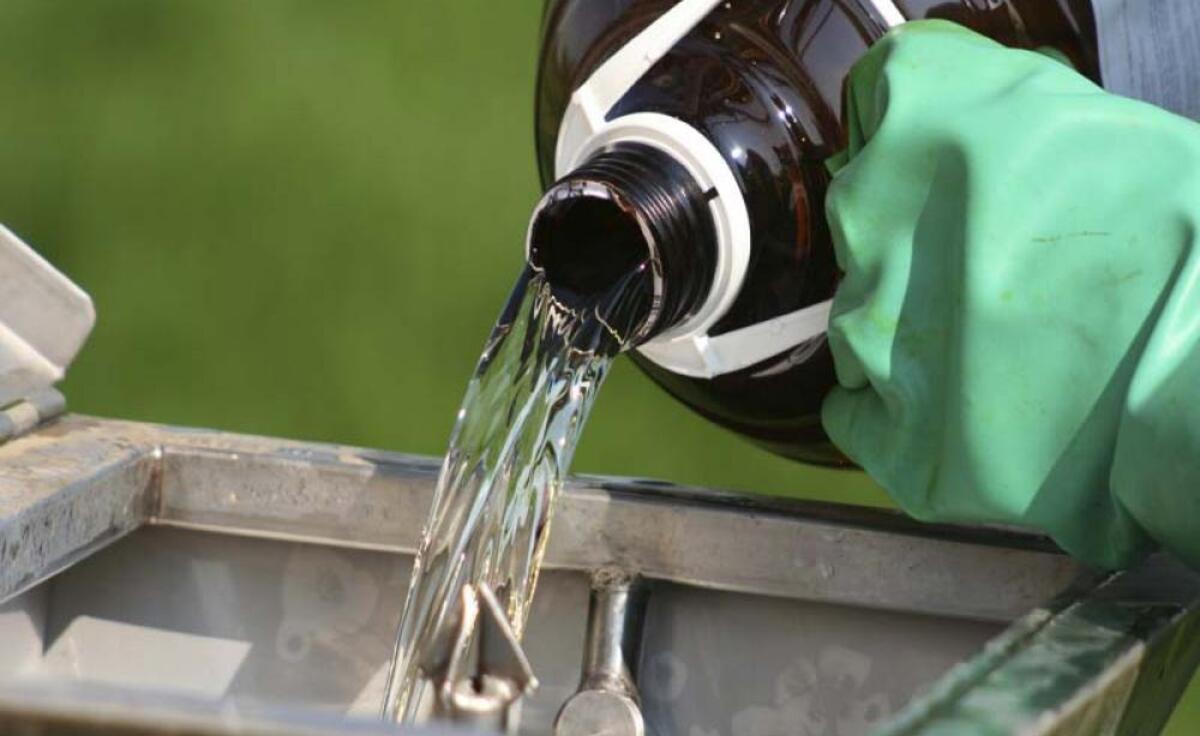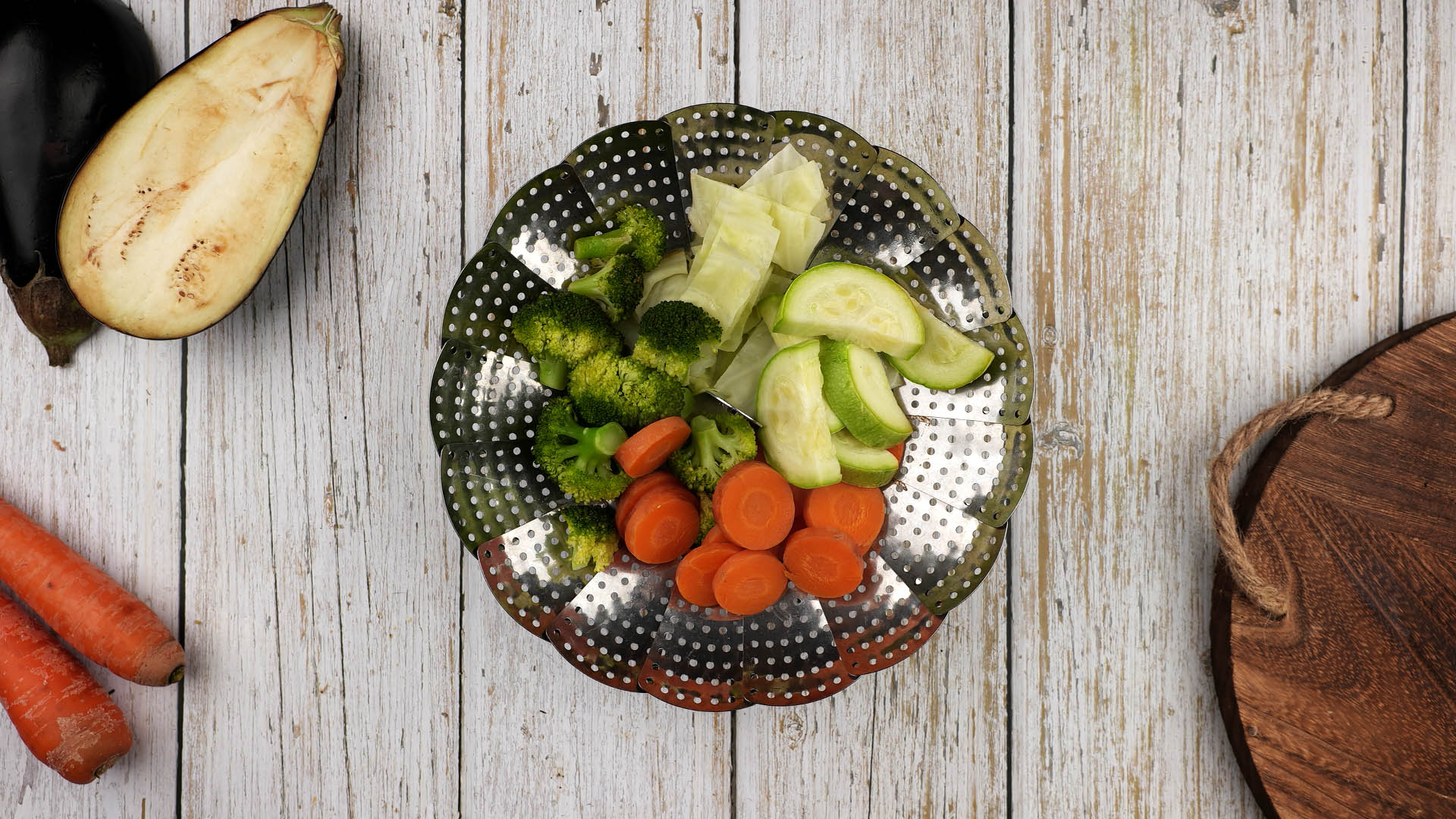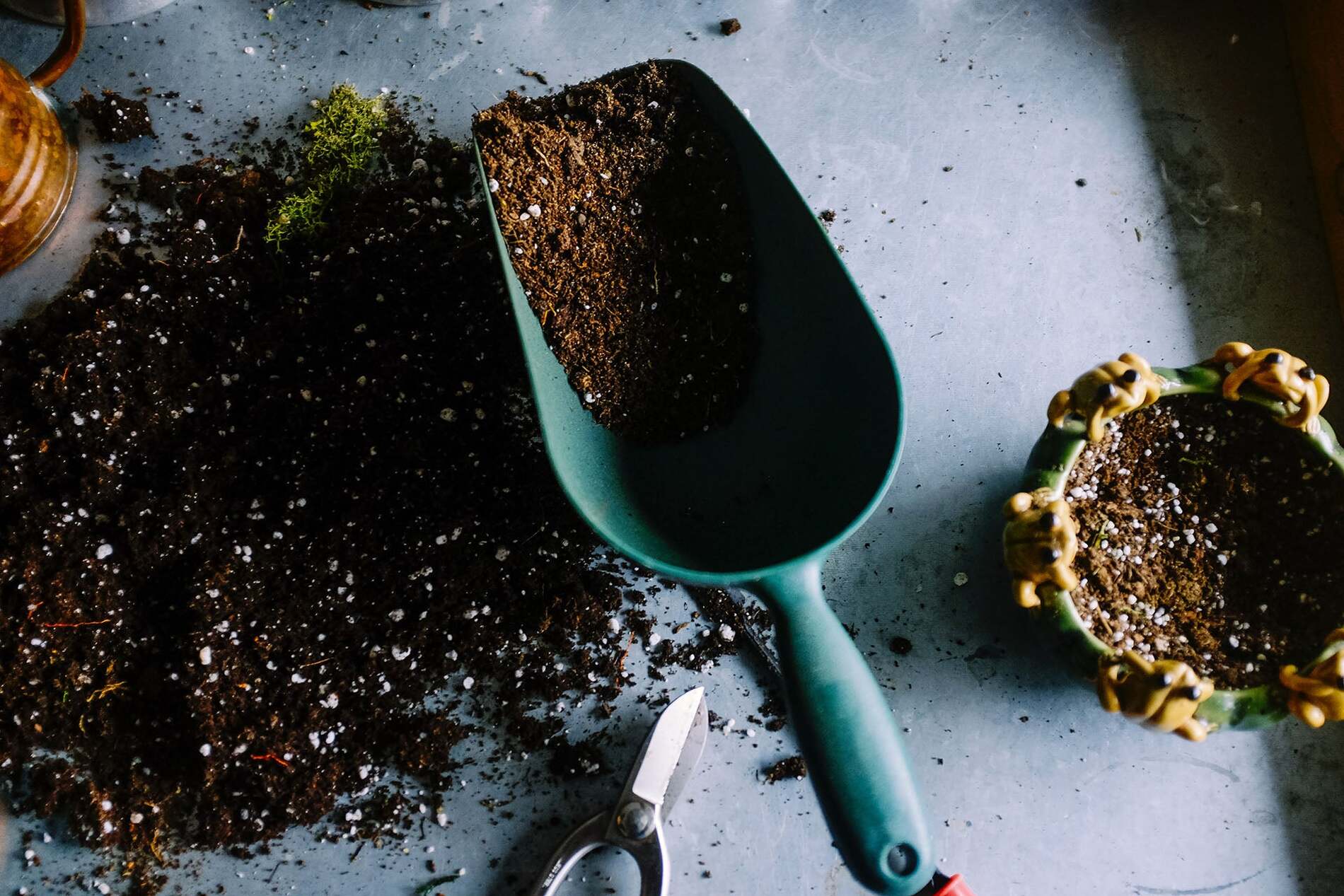Home>Gardening Basics>Understanding Soil>How To Mix Garden Soil


Understanding Soil
How To Mix Garden Soil
Published: February 8, 2024
Learn how to mix garden soil and improve your understanding of soil with our comprehensive guide. Create the perfect soil for your garden today! Understanding Soil.
(Many of the links in this article redirect to a specific reviewed product. Your purchase of these products through affiliate links helps to generate commission for Chicagolandgardening.com, at no extra cost. Learn more)
Table of Contents
Introduction
Understanding the Fundamentals of Garden Soil
Gardening is a delightful and rewarding pursuit that allows individuals to connect with nature and witness the miracle of growth and life firsthand. Whether you are a seasoned gardener or a novice enthusiast, one of the most critical elements of successful gardening is the soil. The quality of your garden soil directly impacts the health and vitality of your plants, making it essential to understand how to create the optimal growing medium for your green companions.
The art of mixing garden soil is a fundamental aspect of gardening that can significantly influence the success of your plants. By mastering the art of soil mixing, you can create a nurturing environment that provides the essential nutrients, moisture, and support that your plants need to thrive. This article aims to guide you through the process of mixing garden soil, from understanding the basics of soil composition to the practical steps of creating a customized soil blend tailored to your specific gardening needs.
As we embark on this journey to demystify the art of soil mixing, it's essential to approach the task with a curious and open mind. Embracing the process of soil mixing as a creative and dynamic endeavor can elevate your gardening experience and empower you to cultivate flourishing and vibrant gardens. So, let's delve into the enriching world of garden soil and unearth the secrets to creating the perfect soil blend for your beloved plants.
Understanding the Basics of Garden Soil
Before diving into the intricacies of mixing garden soil, it’s crucial to grasp the foundational elements that constitute healthy and fertile soil. Garden soil is not merely a medium for plants to anchor their roots; it is a complex ecosystem teeming with life and essential nutrients. Understanding the composition and characteristics of garden soil is pivotal in creating an environment where plants can thrive.
At its core, garden soil comprises mineral particles, organic matter, water, air, and a diverse community of microorganisms. The mineral particles, including sand, silt, and clay, form the physical structure of the soil. Each type of particle influences the soil’s texture, drainage capacity, and nutrient retention. Meanwhile, organic matter, derived from decaying plant and animal materials, enriches the soil with vital nutrients and fosters a favorable environment for beneficial microorganisms.
Water and air are fundamental components that occupy the spaces between soil particles. Adequate pore space in the soil is essential for proper aeration and water retention, ensuring that plant roots receive the oxygen and moisture they need to grow healthily. Furthermore, the diverse community of microorganisms, including bacteria, fungi, and earthworms, plays a crucial role in decomposing organic matter, releasing nutrients, and improving soil structure.
Soil pH, a measure of the soil’s acidity or alkalinity, is another critical aspect to consider. Different plants thrive in varying pH levels, making it essential to understand and monitor the pH of your garden soil. Additionally, the cation exchange capacity (CEC) of the soil influences its ability to retain and exchange essential nutrients with plant roots, further underscoring the significance of comprehending soil basics.
By familiarizing yourself with these fundamental aspects of garden soil, you lay the groundwork for creating a nurturing and supportive environment for your plants. Armed with this knowledge, you are poised to assess your soil needs and embark on the journey of mixing the perfect garden soil tailored to your specific gardening goals.
Assessing Your Soil Needs
Before embarking on the process of mixing garden soil, it is imperative to assess the specific needs of your soil to tailor the soil blend to the requirements of your plants. Conducting a thorough evaluation of your existing soil provides valuable insights into its composition, structure, and potential deficiencies, guiding you in formulating an optimal soil mix.
Begin by observing the physical characteristics of your soil, including its texture, drainage, and water retention. Sandy soils, characterized by large particles, tend to drain quickly but may struggle to retain moisture and nutrients. In contrast, clay soils, with finer particles, have high water retention but may suffer from poor drainage and aeration. Determining your soil’s texture enables you to identify its strengths and weaknesses, informing your decisions when selecting soil components for mixing.
Assessing the fertility of your soil is equally crucial. Conducting a soil test provides valuable information about the nutrient levels in your soil, allowing you to address any deficiencies and avoid over-fertilization. Additionally, observing the presence of earthworms, beneficial insects, and the decomposition of organic matter in your soil indicates its biological activity and overall health.
Consider the pH of your soil, as different plants thrive in varying pH ranges. Testing the soil pH helps you determine whether adjustments are necessary to create an optimal growing environment for your desired plant species. Furthermore, evaluating the soil’s cation exchange capacity (CEC) provides insights into its ability to retain and exchange essential nutrients, guiding your choices in soil components to enhance nutrient availability.
Lastly, consider the specific requirements of the plants you intend to grow in the soil. Some plants may prefer well-draining, sandy soil, while others thrive in loamy soil with balanced moisture retention and aeration. By aligning the soil mix with the unique needs of your plants, you create an environment that fosters robust growth and vitality.
By meticulously assessing your soil’s texture, fertility, pH, and the requirements of your plants, you lay the groundwork for formulating a custom soil mix that addresses the specific needs of your garden, setting the stage for successful plant cultivation and bountiful harvests.
Choosing the Right Soil Components
Once you have assessed the needs of your garden soil, the next crucial step in the soil mixing process is selecting the appropriate components that will constitute your soil blend. Each soil component plays a distinct role in influencing the soil’s texture, structure, nutrient content, and overall suitability for plant growth.
Organic matter, such as compost, well-rotted manure, and leaf mold, serves as a foundational element in creating fertile and nutrient-rich soil. It enhances soil structure, promotes microbial activity, and provides a slow-release source of essential nutrients for plant uptake. Additionally, organic matter improves the soil’s water retention capacity, ensuring a consistent supply of moisture for plant roots.
Mineral components, including sand, silt, and clay, are essential for determining the soil’s texture and drainage properties. Sand, with its large particles, improves drainage and aeration, preventing waterlogging and root suffocation. Silt contributes to soil fertility and moisture retention, while clay, with its fine particles, enhances nutrient retention and soil structure.
Peat moss, derived from decomposed organic matter, is a valuable soil amendment that enhances moisture retention and aeration in the soil. It also contributes to the overall structure and water-holding capacity of the soil, particularly in sandy or fast-draining soils.
Vermiculite and perlite are lightweight, inorganic soil components that aid in improving soil aeration and drainage. These components create air pockets in the soil, preventing compaction and enhancing root development. They are particularly beneficial in heavy clay soils or potting mixes, where improved drainage and aeration are essential for plant health.
When selecting soil components, it is essential to consider the specific needs of your plants and the existing characteristics of your soil. By carefully choosing the right combination of organic and mineral components, you can create a customized soil blend that addresses the unique requirements of your garden, setting the stage for healthy and vigorous plant growth.
Mixing Your Garden Soil
With a clear understanding of your soil’s needs and the appropriate components at hand, the art of mixing garden soil unfolds as a creative and purposeful endeavor. The process of blending soil components requires attention to detail and a commitment to creating a nurturing environment that supports plant growth and vitality.
Begin by preparing a clean and spacious area where you can mix the soil components effectively. Use a tarp or a large container to contain the soil mix, allowing for easy blending and thorough incorporation of the components. Ensure that the tools and equipment you use are clean and free from contaminants to maintain the integrity of the soil blend.
Measure the soil components meticulously, adhering to the proportions determined based on your soil assessment and the specific needs of your plants. A typical soil mix may consist of a balanced combination of organic matter, mineral components, and soil amendments, tailored to create an optimal growing medium for your plants.
Thoroughly blend the soil components, ensuring that each ingredient is evenly distributed throughout the mix. Use a shovel, rake, or garden fork to incorporate the components, working methodically to achieve a uniform texture and consistency. Pay attention to the cohesion and friability of the soil mix, aiming for a well-integrated blend that provides a balanced combination of aeration, moisture retention, and nutrient availability.
Once the soil components are thoroughly mixed, assess the texture and structure of the soil blend to ensure that it aligns with the characteristics desired for your specific gardening needs. Adjust the soil mix as necessary, fine-tuning the proportions of components to achieve the ideal balance of texture, drainage, and fertility.
Upon completing the soil mixing process, store the prepared soil blend in a covered container or area to protect it from contamination and maintain its integrity. Label the soil mix with the date of preparation and the components used to facilitate future adjustments and ensure consistency in your gardening practices.
By approaching the soil mixing process with care, precision, and a deep understanding of your soil’s requirements, you can create a customized soil blend that forms the cornerstone of a thriving and abundant garden. The art of mixing garden soil is a testament to the gardener’s dedication to nurturing plant life and fostering a harmonious relationship with the natural world.
Testing and Adjusting Soil pH
Understanding and managing the pH level of your garden soil is a critical aspect of creating an optimal environment for plant growth. Soil pH, which measures the soil’s acidity or alkalinity, profoundly influences the availability of essential nutrients to plants and directly impacts their overall health and vitality.
Before planting, it is advisable to conduct a soil pH test to determine the current acidity or alkalinity of your soil. Soil testing kits are readily available and provide a simple and effective means of assessing the pH level. Alternatively, local agricultural extension services or garden centers often offer professional soil testing services, offering comprehensive insights into your soil’s pH and nutrient levels.
Once you have determined the soil’s pH, it is essential to interpret the results in the context of the specific needs of your plants. Most plants thrive in soil with a slightly acidic to neutral pH range, typically between 6.0 and 7.0. However, certain plants, such as blueberries and azaleas, prefer acidic soils, while others, like lilacs and clematis, thrive in alkaline soils.
If the soil pH deviates from the optimal range for your desired plants, it may be necessary to adjust the pH to create a suitable growing environment. Adding organic matter, such as compost or well-rotted manure, can help buffer the soil and moderate pH fluctuations. Incorporating elemental sulfur can lower the soil pH in alkaline soils, while lime applications raise the pH in acidic soils.
It is important to note that adjusting soil pH is a gradual process, and it is advisable to make incremental changes over time to avoid drastic fluctuations that may shock plant roots. Regular monitoring of the soil pH, especially after pH-adjusting amendments, allows you to gauge the effectiveness of the adjustments and fine-tune the pH to create an ideal growing medium for your plants.
By testing and adjusting the soil pH as needed, you can ensure that your plants have access to the essential nutrients they require for robust growth and development. Managing soil pH is a proactive measure that underlines your commitment to cultivating a thriving and flourishing garden, where plants can thrive in a balanced and harmonious soil environment.
Conclusion
Embarking on the journey of mixing garden soil unveils a world of possibilities and creativity, where the art of nurturing plant life intertwines with the science of soil management. By understanding the fundamentals of garden soil, assessing its unique needs, and selecting the right components, you lay the groundwork for creating a customized soil blend that fosters robust plant growth and vitality.
The process of mixing garden soil is a testament to the gardener’s dedication to providing a nurturing environment for their beloved plants. It is a harmonious blend of artistry and precision, where soil components are meticulously combined to create a growing medium that embodies the ideal balance of texture, structure, and fertility.
Testing and adjusting the soil pH further underscores the gardener’s commitment to ensuring that plants have access to the essential nutrients they need for thriving growth. By monitoring and fine-tuning the soil pH, you actively participate in creating an optimal soil environment that supports the health and vitality of your garden.
As you embark on the enriching journey of mixing garden soil, remember that each blend is a reflection of your unique gardening vision and the specific needs of your plants. Embrace the process with curiosity and creativity, allowing your passion for gardening to infuse the soil mix with care, intention, and a deep appreciation for the wonders of nature.
Ultimately, the art of mixing garden soil transcends the physical act of blending components; it embodies the gardener’s unwavering dedication to creating a flourishing and bountiful garden. With each carefully crafted soil mix, you nurture a thriving ecosystem where plants can flourish, bloom, and bear the fruits of your labor, creating a tapestry of beauty and abundance in your garden.
So, as you venture forth in your gardening endeavors, may the art of mixing garden soil be a source of joy, inspiration, and connection with the natural world, enriching your journey as a gardener and yielding a tapestry of vibrant and flourishing plant life.






